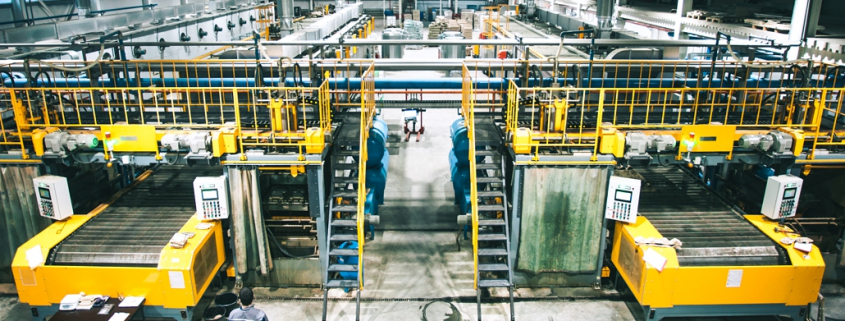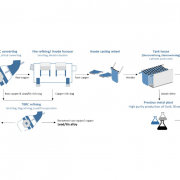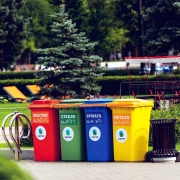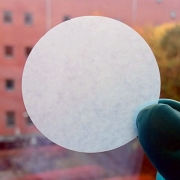The Blockchain Principle for Recycling Paper Cups in Russia
Big cities like takeaway drinks. At the same time, paper cups are practically not recycled all over the world. Many people think that paper cups are unrecyclable due to organic residues and a plastic layer inside, but actually, it is not valid. Recyclers can deal with organic residues and plastic lamination in different ways. One of the most effective is dry dispersing.
The following problems arise when collecting cups. First, it is difficult to accumulate the required volume of paper cups. Secondly, used paper cups cannot be stored for a long time because mold forms on the paper. But paper cups are a promising source of fiber for recycling. Virgin bleached cellulose is the primary material for paper cups. The lamination inside is polyethylene – it can also be separated and processed, for example, into tiles.
There is a plant in Russia that has tackled recycling paper cups, despite the difficulties. It is the Solnechnogorsk Experimental Mechanical Plant – SOEMZ. The founder of the plant is Denis Kondratyev, professor at Moscow Witte University. Denis is also a member of the Supervisory Board of the Wastepaper Processors League Association, which unites 73 recycling facilities in Russia. Denis is currently implementing a system of decentralized collection and processing of waste paper for his plant.
SOEMZ produces goods from formed paper fiber (pulper cardboard), such as trays for fruits and vegetables, paper holders for glasses, lodgements for gift sets of cosmetics, etc., more than 140 types of products. The products regularly receive international awards: PART Award, Red Dot Award, WorldStar Packaging Awards. ÄGGKOPP ‘Paper Wave’ packaging for the transport of fragile goods won an international award at the 2019. As well SOEMZ exports a wide range of products to European countries. For example, the company supplies the UK with cup holders manufactured using recycled paper cups.
Newspapers have always been a part of the materials used in the production of pulper cardboard. But recently, the cost of newspapers has increased significantly. Also there is no newspaper collection from the citizens. OCC became the critical waste paper brand used by recyclers. In Russia, the collection rate of OCC is around 90 %, but the price is relatively high – about 23,000 rubles per ton (275 EUR). The use of only OCC for the production of formed paper fiber should not be economically possible.
Therefore, SOEMZ has become a driver of changes in waste paper procurement. In Russia, the company Parmatech produces equipment that is engaged in dry fiber separation called dispergator. The paper cups go into the dispergator, and the output is dry paper fiber and plastic lamination, which is also recyclable. A sharp pressure drop occurs in the dispersion process, acidophilic and other bacteria die in such conditions, thus eliminating the possibility of the appearance and development of mold. After dispersion, the fiber is stored significantly longer without the risk of mold development, which is impossible when holding used paper cups. Also, the dispergator copes with the task of fiber separation better than the pulper because no water is used or contaminated in the process. Further processing of materials in the process of production occurs by adding biocides and heating the finished products.
SOEMZ has been cooperating with IKEA for several years. The plant accepts previously unclaimed types of waste paper from the IKEA transport corner and core board. Also, IKEA collects paper cups while in a pilot project and supplies them to SOEMZ together with other types of waste paper. For two years, SOEMZ processed about 500,000 cups. Nowadays, the plant creates decentralized procurement of used paper cups according to the blockchain principle. Waste paper collectors will pick up the used cups in food courts and shopping centers. After that, waste paper collectors will use dispergators to separate paper fiber from plastic in their warehouses. SOEMZ, in turn, will buy paper fiber processed in this way.
Dispergators will be installed by waste paper collectors that serve shopping centers. This is the meaning of a decentralized collection system: different suppliers of SOEMZ will install equipment in the required amount. Moreover, one dispergator by itself is not capable of processing a large scale of materials. In this case, this is its advantage: the equipment is mobile, and one dispegator is equal in size to a sea container. Each dispersant can produce approximately three tons of fiber per day. As a result, SOEMZ will purchase from different suppliers the amount of fiber from paper cups required for production – 20 tons per day. It is not profitable to centrally accumulate and store paper cups; decentralizing the collection of materials will solve the problem. The plant is currently negotiating the installation of dispergators with two waste paper collection enterprises located in Moscow and Nizhny Novgorod.
Source: SOEMZ (Russia, June 02, 2021)









